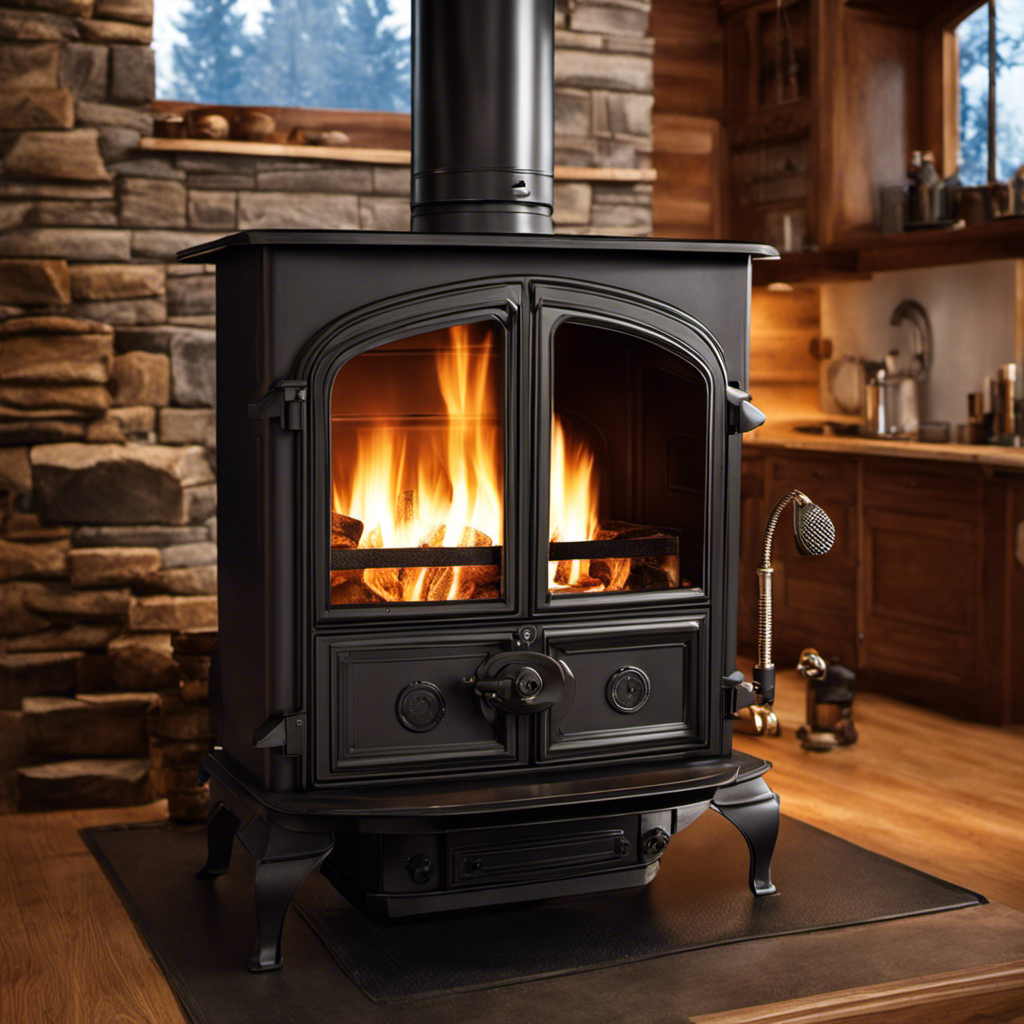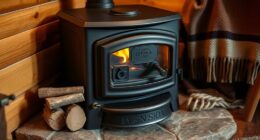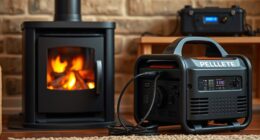I love wood-burning stoves and enjoy sharing my expertise on **wood stove piping**. Discover how to choose the best material for your pipes, measure accurately for the perfect length, make precise cuts, create connections, and skillfully install pipes through walls or ceilings. If you want to upgrade your wood stove setup, keep reading to learn valuable tips and secrets to ensure a successful installation.
Plus, I’ll guide you on ensuring proper ventilation and safety measures. Let’s dive into this informative journey and make your wood stove experience even more enjoyable!
Key Takeaways
- Stainless steel is a durable and corrosion-resistant option for wood stove pipes.
- Consider the diameter of the pipe based on the size of the wood stove and distance it needs to cover.
- Insulated stainless steel pipes provide excellent insulation and reduce condensation risk.
- Properly measuring, cutting, joining, and installing the wood stove pipe is crucial for efficiency and safety.
Selecting the Right Wood Stove Pipe Material
I’m researching which wood stove pipe material is the best for my home, and I think I’ll go with stainless steel because it’s durable and resistant to corrosion.
When choosing the appropriate diameter for the pipe, it’s important to consider the size of your wood stove and the distance it needs to cover. A larger diameter will allow for better airflow, while a smaller diameter may lead to restricted airflow and decreased efficiency.
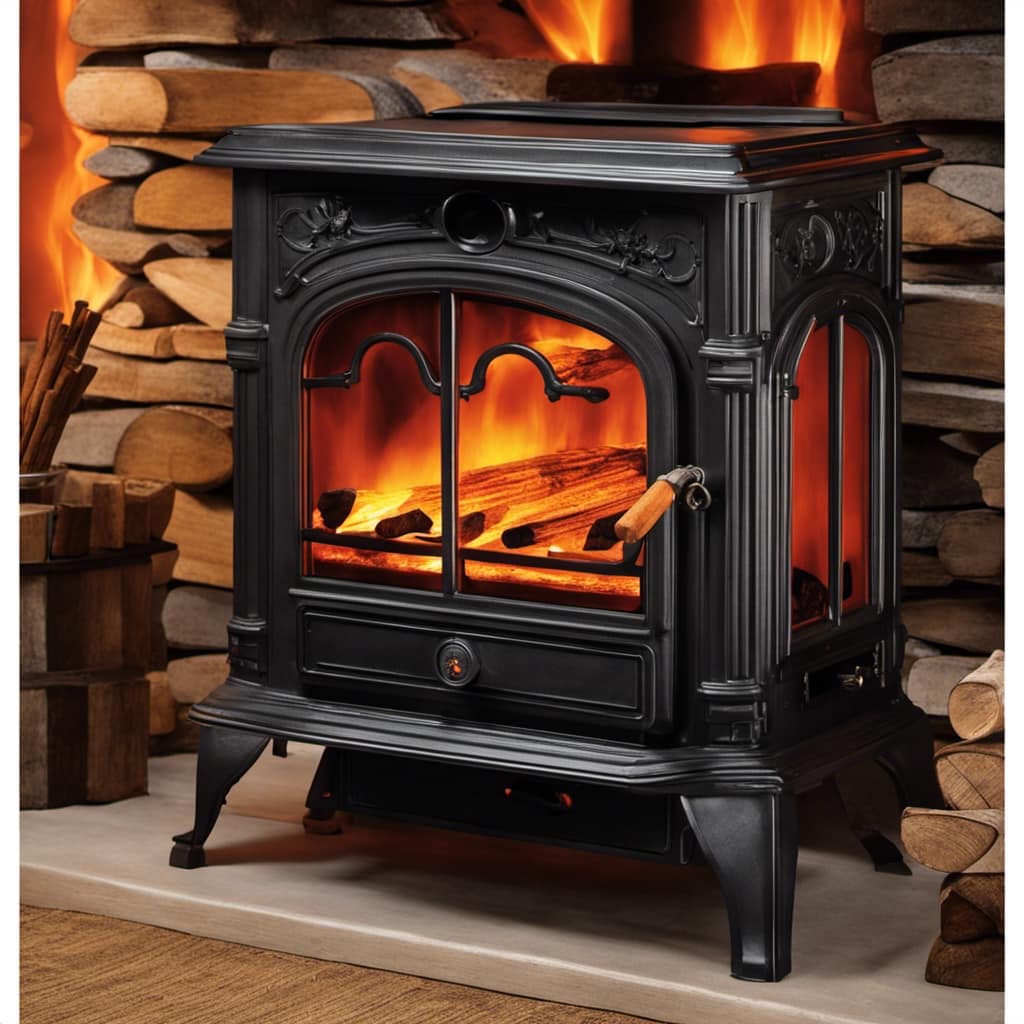
Additionally, considering insulation options is crucial to prevent heat loss and increase the overall efficiency of your wood stove. Insulated stainless steel pipes are a popular choice as they provide excellent insulation and reduce the risk of condensation.
Moving forward, I’ll now discuss measuring and planning for the proper pipe length.
Measuring and Planning for Proper Pipe Length
To ensure proper installation, it’s essential to accurately measure and carefully plan for the length of the wood stove pipe. Here are some key measuring techniques and calculations for determining the correct pipe length:
- Measure the distance from the top of the stove to the ceiling or the point where the pipe will exit the room.
- Take into account any bends or angles in the pipe route.
- Use a plumb line or level to ensure the pipe is straight and vertical.
- Consider the height of the chimney or flue to determine the overall length needed.
Calculating pipe angles is also crucial to ensure efficient airflow and prevent smoke backflow. Use a protractor or angle finder to measure the angle of the stovepipe elbow, and then calculate the corresponding offset distance.
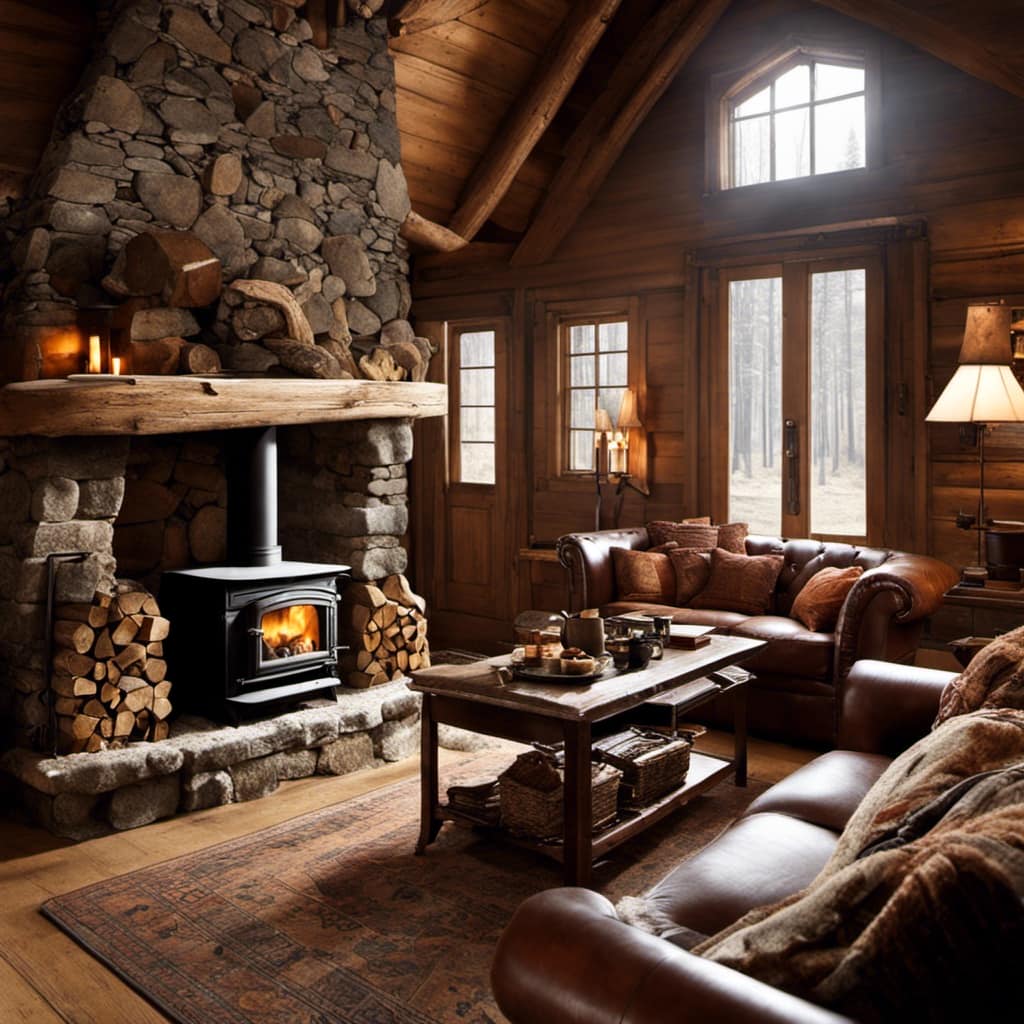
By accurately measuring and calculating pipe angles, you can plan for the proper length of the wood stove pipe, ensuring a safe and efficient installation.
Now, let’s move on to the next step: cutting and joining the wood stove pipe.
Cutting and Joining the Wood Stove Pipe
I’ll start by measuring the length needed for the wood stove pipe.
Then I’ll cut it to size and join the sections together using metal screws and high-temperature sealant. Joining techniques are crucial for ensuring a secure and efficient wood stove pipe installation.
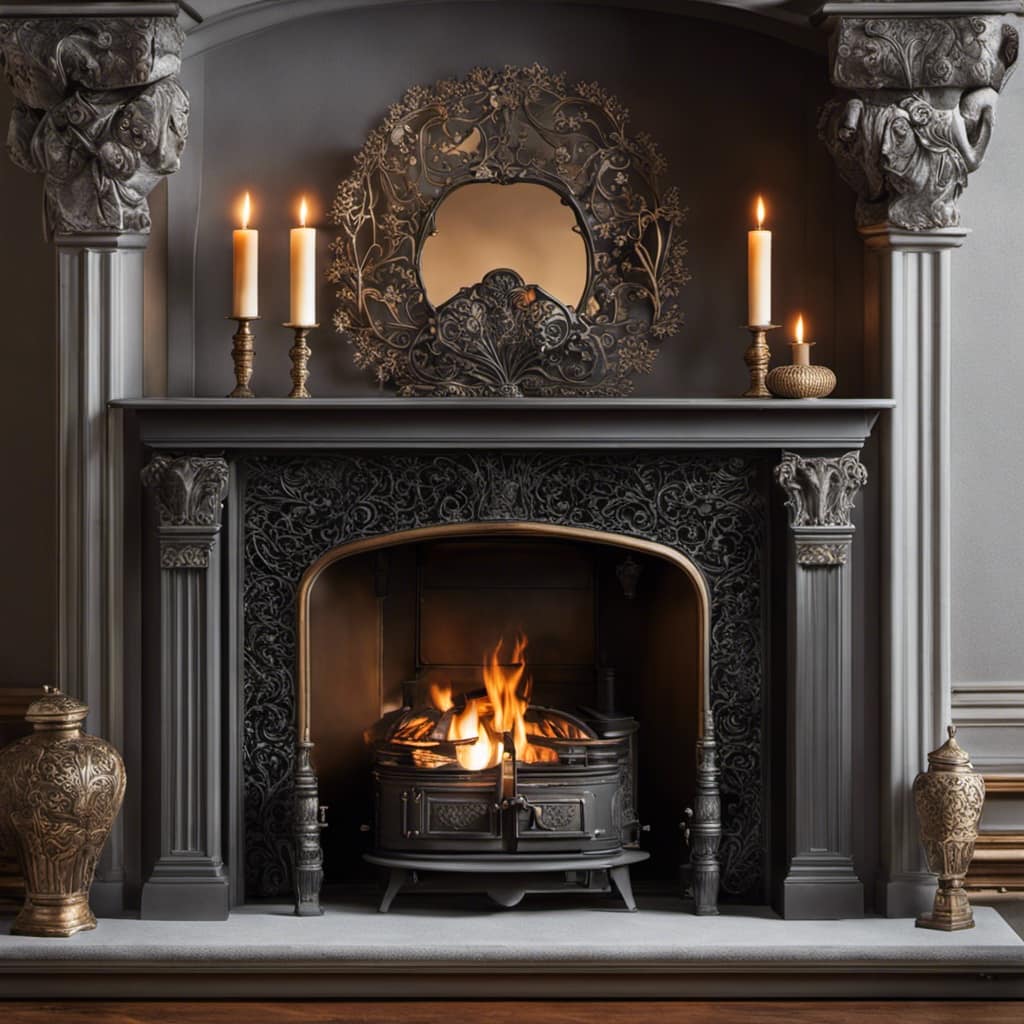
When cutting the pipe, it’s important to use a pipe cutter or a reciprocating saw with a metal-cutting blade to ensure clean and precise cuts.
After cutting the sections, I’ll use metal screws to connect them securely, ensuring a tight fit. To prevent any leaks, I’ll apply high-temperature sealant to the joints. It’s essential to choose a sealant specifically designed for wood stove pipes to withstand high temperatures.
Regular maintenance is also crucial for the longevity of the wood stove pipe. Inspecting the joints regularly and resealing them if necessary will help maintain the efficiency of the wood stove and prevent any potential hazards.
Installing the Wood Stove Pipe Through the Wall or Ceiling
I will carefully assess the best location for installing the wood stove pipe, whether it be through the wall or ceiling, to ensure proper ventilation and safety. When installing a wood stove pipe in tight spaces, it’s important to consider the following:
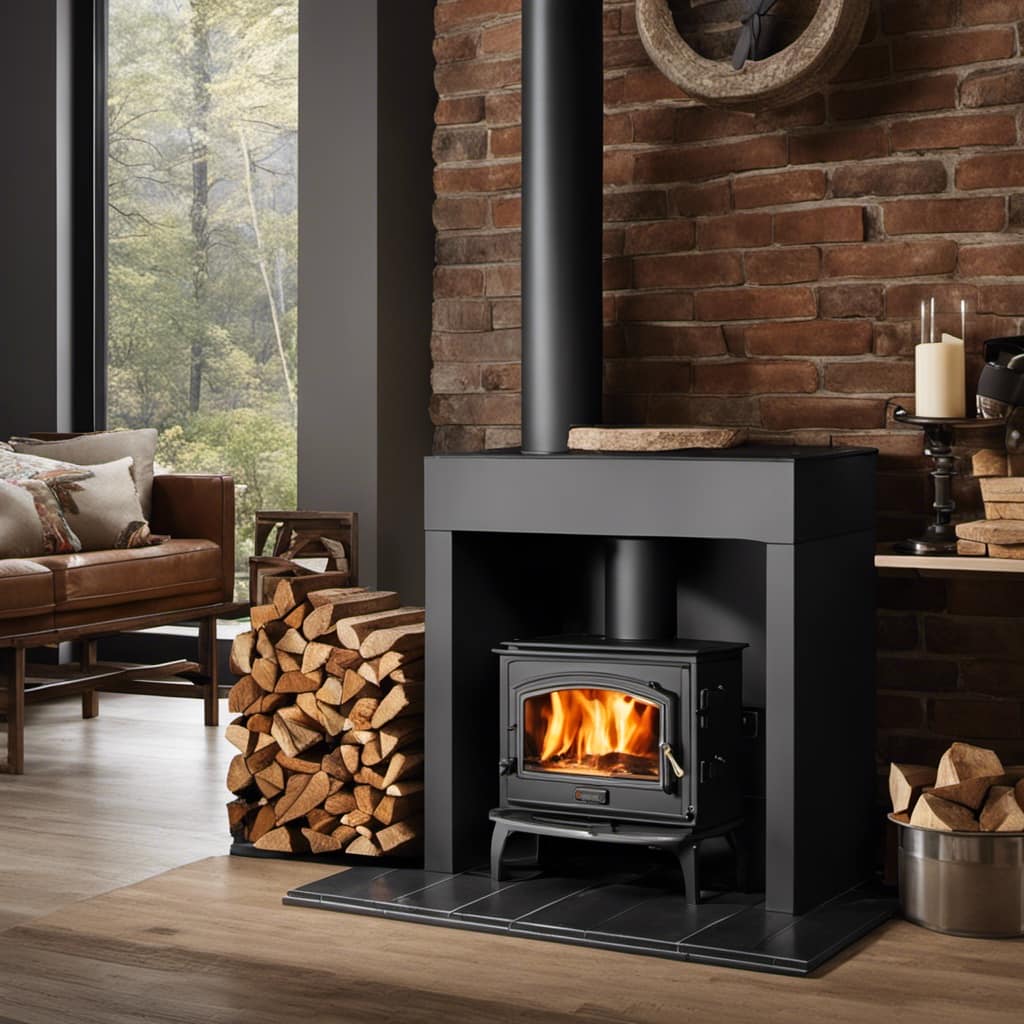
-
Measure the available space: Take precise measurements to determine if the stove pipe will fit through the wall or ceiling. Consider any obstacles such as beams or electrical wiring that may interfere with the installation.
-
Choose the right materials: Select a stove pipe that’s suitable for tight spaces. Look for options that are flexible and can easily navigate corners and bends.
-
Insulate the stove pipe: To prevent heat loss and potential fire hazards, insulate the stove pipe with high-quality insulation. This will also help improve the stove’s efficiency.
-
Follow safety guidelines: Ensure that the stove pipe is properly supported and secured. Use appropriate connectors and follow local building codes and regulations.
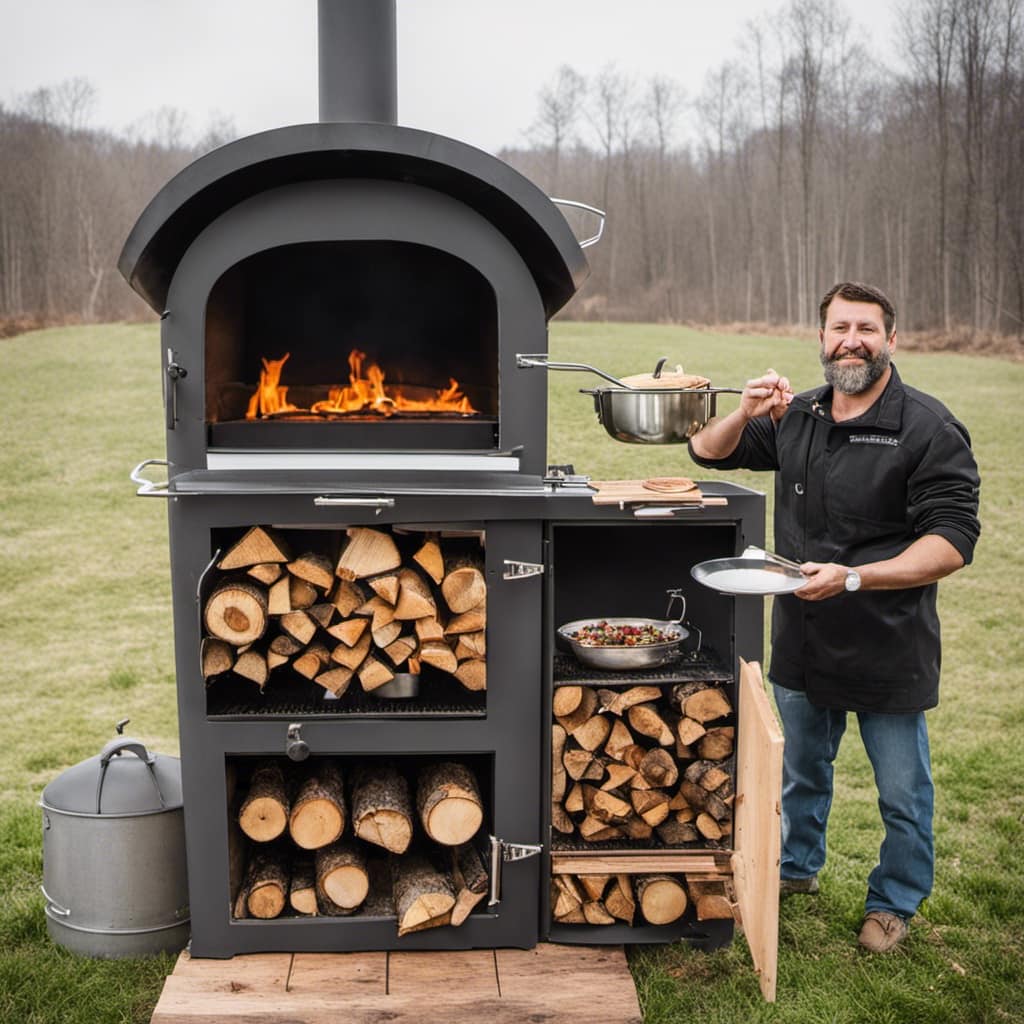
Ensuring Proper Ventilation and Safety Measures
The installation of a wood stove pipe requires careful consideration of proper ventilation and safety measures. Ensuring that the stove pipe is properly ventilated is crucial for the safe and efficient operation of the wood stove. Ventilation requirements vary depending on factors such as the size of the stove and the layout of the room. It is important to consult the manufacturer’s guidelines or a professional installer to determine the specific ventilation requirements for your wood stove. Additionally, there are several safety precautions that should be followed when installing a wood stove pipe. These include using the appropriate materials and components, ensuring proper clearances from combustible materials, and regularly inspecting and cleaning the chimney and stove pipe. By following these ventilation requirements and safety precautions, you can enjoy the warmth and comfort of your wood stove while ensuring the safety of your home and loved ones.
| Ventilation Requirements | Safety Precautions |
|---|---|
| Consult manufacturer’s guidelines or professional installer | Use appropriate materials and components |
| Determine specific requirements based on stove size and room layout | Ensure proper clearances from combustible materials |
| Adequate ventilation for safe and efficient operation | Regularly inspect and clean chimney and stove pipe |
Frequently Asked Questions
How Often Should I Clean My Wood Stove Pipe?
I clean my wood stove pipe at least once a year to remove creosote buildup. Signs of a dirty pipe include decreased draft, dark smoke, and a strong odor. Regular cleaning ensures safe and efficient operation of the stove.
Can I Use a Wood Stove Pipe With a Different Diameter Than My Wood Stove Outlet?
Yes, you can use a wood stove pipe with a different diameter than your wood stove outlet, but it may pose compatibility and installation challenges. It is important to ensure proper ventilation, follow safety regulations, and clean it regularly.
Are There Any Specific Regulations or Codes I Need to Follow When Installing a Wood Stove Pipe?
Are there specific regulations or codes to follow when installing a wood stove pipe? Yes, there are. It’s important to ensure compliance with local building codes and manufacturer’s installation requirements for safety and efficient operation of the wood stove.
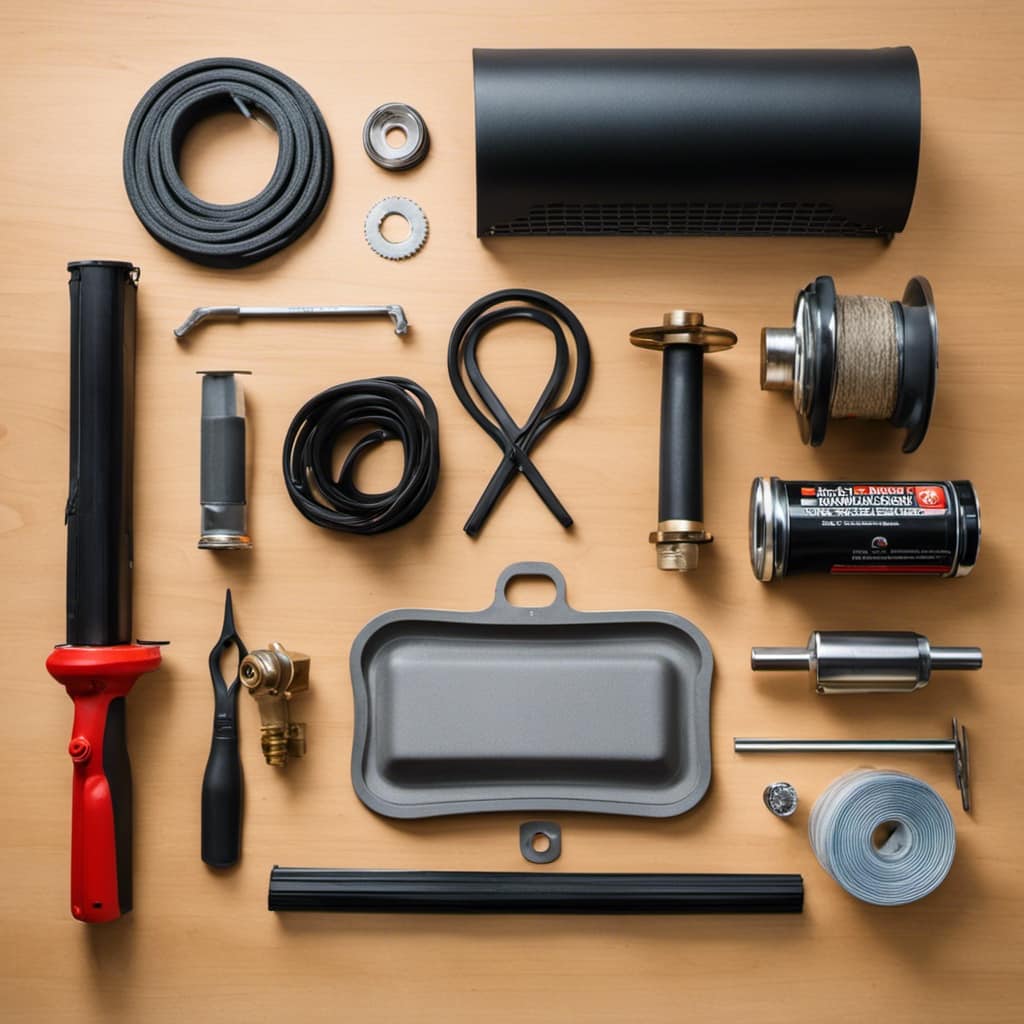
Can I Use the Same Wood Stove Pipe for Both a Wall and a Ceiling Installation?
Yes, you can use the same wood stove pipe for both wall and ceiling installations. However, it’s important to ensure that you are using the proper wood stove pipe materials and following the correct installation guidelines to maintain safety and efficiency.
How Far Should the Wood Stove Pipe Extend Above the Roofline for Proper Ventilation?
For proper ventilation, the wood stove pipe should extend at least 2 feet above the roofline. It’s important to use proper insulation and choose the best materials for the wood stove pipe to ensure safety and efficiency.
Conclusion
As the flames dance and the warmth envelops your space, the wood stove pipe becomes the conduit for a cozy haven. Just like a well-crafted symphony, the right materials, precise measurements, and secure connections ensure a harmonious flow.
With careful installation and proper ventilation, you can enjoy the tranquility and safety that a wood stove brings.
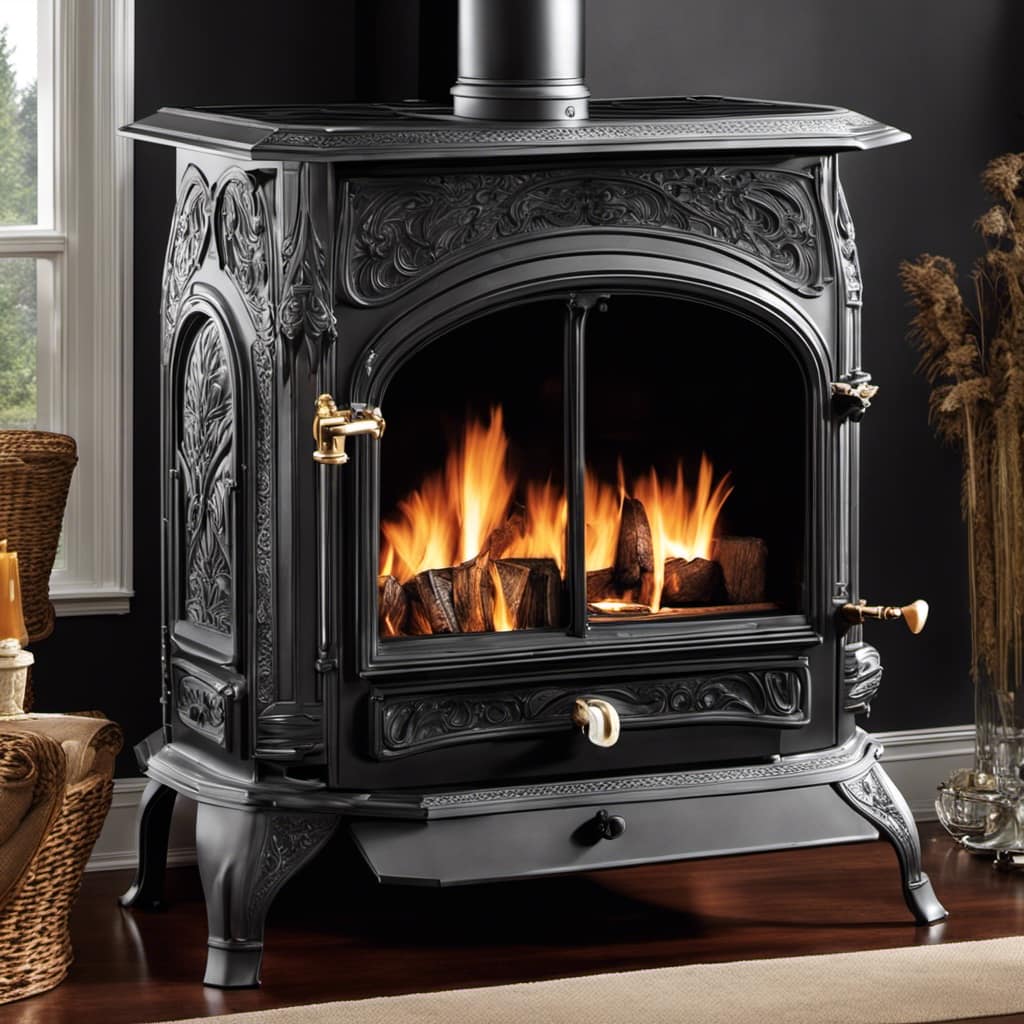
So embrace the allure of the crackling fire and let the wood stove pipe breathe life into your sanctuary.
Growing up surrounded by the vast beauty of nature, Sierra was always drawn to the call of the wild. While others sought the comfort of the familiar, she ventured out, embracing the unpredictable and finding stories in the heartbeat of nature.
At the epicenter of every remarkable venture lies a dynamic team—a fusion of diverse talents, visions, and passions. The essence of Best Small Wood Stoves is crafted and refined by such a trio: Sierra, Logan, and Terra. Their collective expertise has transformed the platform into a leading authority on small wood stoves, radiating warmth and knowledge in equal measure.






